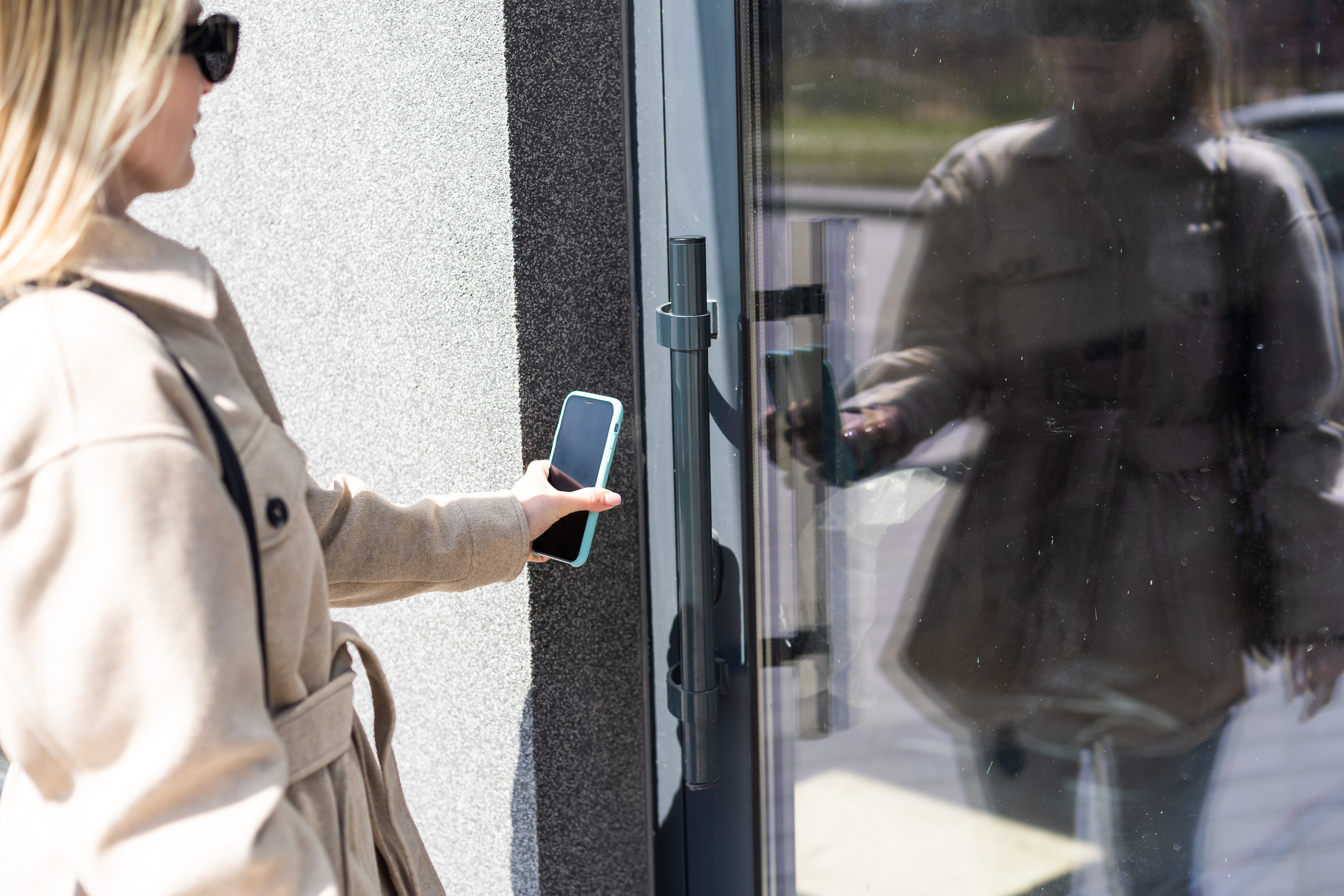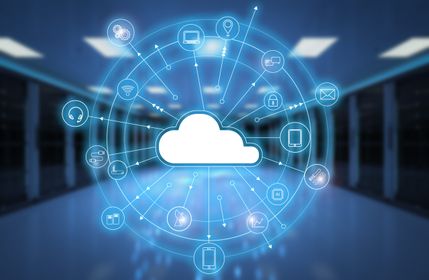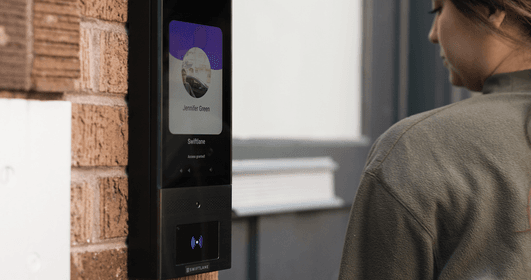
There’s a good chance that you’ve heard of or even used a keyless entry system at some point in your life. In fact, keyless entry systems have come a long way since their initial emergence in the automotive industry and widely used for buildings as well. I’m here to provide an in-depth and comprehensive overview of how keyless entry systems work, how they have evolved over time, and why they are becoming more popular in various industries today.
Table of contents
- The Evolution of Keyless Entry Systems
- What are Keyless Entry Systems
- Why Keyless Entry Systems Are Gaining Popularity
- Types of Spaces that Benefit from Keyless Entry
- Advantages of Keyless Entry Systems
- Choosing the Right Cloud-Based Keyless Entry Solution
- How Temporary PINs Work
- Best Practices for Managing and Monitoring Visitor Access
Suggested Posts:
- Guide to Apartment Intercom System
- Keyless Entry Systems for Apartments
- Exploring Keyless Entry Systems for Businesses
- Apartment Buzzers – Comprehensive Guide and Buyer Tips
- Keyless Door Entry Systems in Commercial Buildings – An In-Depth Guide
The Evolution of Keyless Entry Systems
Keyless entry systems were first introduced as a convenient feature for automobile owners, allowing them to lock and unlock their vehicles without physically using a key. Over the years, the technology behind these systems has advanced significantly, offering new capabilities and enhanced security features.
The earliest keyless entry systems relied on simple infrared technology or basic radio frequency signals. However, these systems were not without their flaws, as they were susceptible to interference and the signal had limited range.
Today, modern keyless entry systems use advanced encryption algorithms, biometric authentication, and even smartphone integration to provide a more secure, user-friendly, and efficient access solution.
What are Keyless Entry Systems
In a nutshell, keyless entry systems allow authorized users to access a locked space without the need for a physical key. There are several different types of keyless entry systems available, each with its own unique feature and method of granting access, such as:
- Keypad-based systems that require users to enter a personal identification number (PIN) or access code
- Proximity card readers that grant access when a valid card is within range
- Biometric systems that verify a user’s identity using fingerprint, facial recognition, or retina scanning technology
- Smartphone-based systems that use Bluetooth, Wi-Fi, or mobile data to communicate with the access control system
Why Keyless Entry Systems Are Gaining Popularity
There are several key reasons why keyless entry systems have grown increasingly popular in recent years, some of which include:
- Enhanced security: Traditional keys can be lost, stolen, or easily duplicated, while keyless entry systems offer a higher level of security, making it more difficult for unauthorized users to gain access.
- Convenience: Users can say goodbye to the hassle of carrying around keys, as access can be granted using a PIN, proximity card, biometric data, or even a smartphone.
- Efficiency: Keyless entry systems streamline the process of managing access rights, making it easier for property owners or managers to add, remove, or update user access as needed.
As technology continues to advance, so does the potential for keyless entry systems to improve the way we secure and access our spaces. With an ever-growing list of features, capabilities, and benefits, it’s no wonder that keyless entry systems have become increasingly popular in a variety of industries today.
Types of Spaces that Benefit from Keyless Entry
Keyless entry systems have become increasingly popular, with manufacturers offering a diverse range of solutions for various types of spaces. While we have already discussed the benefits and advantages of keyless entry systems in general, let’s take a closer look at the specific industries and types of spaces where keyless entry systems can offer tremendous value.
Cars
- Keyless entry systems have been a staple in the automotive industry for years, allowing drivers to lock and unlock their vehicles with the push of a button or a simple touch.
- As technology has evolved, so have the features offered by car keyless entry systems. Today, many modern vehicles come equipped with features like remote start, GPS tracking, and even smartphone integration.
- Key considerations for car keyless entry systems include the type of signal used (such as infrared or radio frequency), the range at which the system operates, and the level of encryption offered to protect against hackers and thieves.
Offices
- Offices of all sizes can benefit from keyless entry systems by improving security and access management, especially where sensitive information or valuable equipment is stored.
- Keyless entry systems can be customized to grant access to specific areas of a building only to those who have been granted the necessary permissions.
- In large office complexes or multi-tenant buildings, keyless entry systems can be used to manage access to common areas such as parking garages, fitness centers, and conference rooms.
Residential Front Doors and Apartments
- Homeowners and apartment dwellers can benefit from the added security and convenience offered by keyless entry systems.
- For rental properties or apartment buildings, keyless entry systems simplify the process of granting and revoking tenant access, making property management easier and more efficient.
- Key considerations for residential keyless entry systems include the type of access method used (such as keypad, proximity card, or biometric), the ease of installation and integration with existing security systems, and the overall aesthetic of the system to ensure it complements the property’s design.
Hotels, Airbnb Properties, and Vacation Rentals
- Keyless entry systems are becoming increasingly popular in the hospitality industry as a way to streamline check-in and check-out processes, improve security, and reduce the need for physical keys.
- Temporary access codes or digital keys can be easily generated for guests, allowing property owners or managers to maintain better control over who has access to their property and when.
- Additional features, such as remote monitoring and usage tracking, can provide valuable insights into guest behavior and help improve overall property management.
Gyms, Co-working Spaces, and Other Shared Facilities
- The shared nature of these spaces requires a robust access control system to ensure that only authorized individuals can gain entry.
- Keyless entry systems offer a convenient and secure solution for granting access to members or users of these shared spaces.
- By tracking usage and generating reports, keyless entry systems can help facility managers better understand how their spaces are being used and identify potential areas for improvement or expansion.
Closer look: Guide to Key Fob Systems for Gyms
As we can see, keyless entry systems offer a wide range of benefits and advantages for various types of spaces. By understanding the unique needs and requirements of each industry or space, keyless entry systems can be customized to provide the most effective and efficient access control solution possible.
Advantages of Keyless Entry Systems
Keyless entry systems have transformed the way businesses, homes, and vehicles are accessed, offering a myriad of benefits that extend far beyond the simple convenience of not having to carry around keys. In this section, we’ll dive into the main advantages of keyless entry systems and provide real-world examples that demonstrate their positive impact across various spaces and industries.
Improved Operational Efficiency
- Keyless entry systems streamline the process of managing access rights, allowing property owners or managers to quickly and easily grant or revoke access to users as needed.
- These systems eliminate the need to physically distribute and collect keys, saving both time and money.
- Real-world example: A large office complex using a keyless entry system can easily manage access rights for hundreds of employees, ensuring that only authorized individuals have access to restricted areas.
Ease of Use
- Users no longer need to fumble with keys, as access can be granted using a PIN, proximity card, biometric data, or a smartphone.
- Keyless entry systems are intuitive and user-friendly, making them easy to adopt and use for people of all ages and tech-savviness levels.
- Real-world example: An elderly person living in an apartment building can use a simple key fob to securely access their unit without needing to remember a PIN or handle a traditional key.
Enhanced Security
- Traditional keys are susceptible to loss, theft, and unauthorized duplication, whereas keyless entry systems offer a much higher level of security.
- Advanced encryption algorithms, biometric authentication, and smartphone integration all contribute to making keyless entry systems more secure than traditional locks.
- Real-world example: A high-end jewelry store can employ a biometric keyless entry system to ensure only authorized personnel with registered fingerprints have access to the store’s inventory and secure areas.
Convenience
- With keyless entry systems, users no longer need to carry around a bulky set of keys or worry about losing them.
- Temporary access codes or digital keys can be easily issued and revoked, adding a layer of convenience for guests, service providers, or temporary users.
- Real-world example: A hotel guest can receive a temporary access code via email, allowing them to check in and access their room without ever needing to visit the front desk or carry a physical key.
Remote Management Capabilities
- Cloud connectivity enables property owners or managers to remotely manage keyless entry systems from virtually anywhere, using a computer or mobile device.
- This allows for real-time monitoring of access events, updates to user access rights, and even remote unlocking or locking of doors when necessary.
- Real-world example: A property manager overseeing a portfolio of vacation rentals can remotely monitor and manage access for guests, cleaning staff, and maintenance personnel, ensuring a seamless and secure experience for all parties involved.
In conclusion, keyless entry systems offer a range of advantages that have driven their widespread adoption across various industries and spaces. By improving operational efficiency, providing users with a more convenient and secure way to access their spaces, and enabling more remote control and management capabilities, keyless entry systems continue to revolutionize access control and security in the modern world.
Cloud Connectivity and Keyless Entry Management
Cloud connectivity has become a game-changer for the world of keyless entry systems. By leveraging cloud-based technology, property owners and managers can easily manage access for multiple users, monitor usage, receive real-time notifications, and more. In this section, we’ll take a closer look at the role of cloud connectivity in keyless entry management, and emphasize the importance of choosing a reliable and secure cloud-based solution.
The Power of the Cloud
When it comes to remote keyless entry and management, the cloud offers several advantages over traditional, standalone systems. Some of these benefits include:
- Remote access: Property owners or managers can access the keyless entry system from virtually anywhere, using a computer, tablet, or smartphone. This allows for on-the-go management of access rights, as well as real-time monitoring of access events.
- Scalability: Cloud-based keyless entry systems can easily accommodate an expanding number of users and locations, making them an ideal solution for businesses with multiple properties or plans for future growth.
- Data storage and backups: Cloud connectivity ensures that all access data is securely stored and backed up remotely, eliminating the risk of data loss due to on-site hardware failures or disasters.
Enhanced Access Control
With the power of the cloud at their fingertips, property owners and managers can take access control to the next level by:
- Creating custom access schedules: Cloud-based keyless entry systems allow for the creation of custom access schedules for different users, ensuring that individuals can only access certain areas during specified times.
- Managing temporary access: Granting temporary access to visitors, delivery personnel, or contractors becomes a breeze with cloud-based keyless entry systems, as temporary PINs or digital keys can be generated and revoked with just a few clicks.
- Real-time notifications: Cloud connectivity enables real-time notifications to be sent to property owners or managers whenever a door is accessed, providing valuable insights into usage patterns and potential security concerns.
Choosing the Right Cloud-Based Keyless Entry Solution
Given the numerous advantages that cloud connectivity offers for keyless entry management, it’s vital to select a reliable and secure cloud-based solution. Here are some factors to consider when making your choice:
- Security: Choose a keyless entry system that utilizes advanced encryption algorithms and adheres to strict data security protocols to ensure the protection of your access data.
- Reliability: Opt for a cloud-based keyless entry system from a reputable provider with a proven track record of reliable performance and minimal downtime.
- User-Friendly Interface: A user-friendly platform is essential for both property owners and users, making access management and navigation a seamless experience.
- Integration: Look for a cloud-based keyless entry solution that easily integrates with your existing security systems and IoT devices for a comprehensive and cohesive security solution.
In summary, cloud connectivity has revolutionized keyless entry management by enabling property owners and managers to access, monitor, and manage their systems remotely. When selecting a cloud-based keyless entry solution, be sure to prioritize security, reliability, user-friendliness, and integration for a seamless and efficient access control experience.
Visitor Access and Temporary PINs
In today’s fast-paced and interconnected world, granting temporary access to visitors, deliveries, and other non-permanent users has become an essential aspect of access control management. Keyless entry systems have revolutionized this process by offering a convenient and secure way to manage visitor access through the use of temporary PINs. In this final section of our comprehensive guide to keyless entry systems, we’ll explore how keyless system and temporary PINs work, their benefits, and best practices for managing and monitoring visitor access.
How Temporary PINs Work
Temporary PINs are unique access codes generated by the keyless entry system for short-term use. These PINs can be created by property owners or managers and issued to visitors, delivery personnel, or contractors, granting them temporary access to the premises. Temporary PINs have a limited lifespan, meaning they will automatically expire after a predetermined amount of time or number of uses. This ensures that non-permanent users can only access the premises during the specified timeframe, enhancing overall security and control.
Benefits of Temporary PINs
By using temporary PINs, property owners or managers can enjoy a range of benefits, such as:
- Increased security: Temporary PINs help reduce the risks associated with unauthorized access, as they are only valid for a limited time and can be easily revoked or modified if necessary.
- Better control: By generating unique PINs for each visitor, property owners or managers can maintain better control over who is allowed to enter their premises and during what time periods.
- Convenience: Temporary PINs can be sent to visitors via email, SMS, or even through a mobile app, allowing for a seamless and efficient access process.
Best Practices for Managing and Monitoring Visitor Access
When it comes to managing and monitoring visitor access, there are several best practices to follow in order to ensure the security and efficiency of your keyless entry system:
- Regularly review access logs: Make a habit of reviewing access logs on a regular basis to identify any unusual patterns or activities. This can help identify potential security risks and address them before they escalate.
- Set appropriate expiration times: When generating a temporary PIN, consider the specific needs and circumstances of each visitor to determine an appropriate expiration time. For example, a delivery personnel might only require access for a few hours, while a contractor might need a few days.
- Limit access to necessary areas: Restrict visitor access to only the areas they need to enter, and avoid granting access to sensitive or secure locations. This ensures that non-permanent users do not wander into unauthorized sections of the premises.
- Revoke access immediately when necessary: In the event of a security concern or breach, be prepared to revoke access immediately. This can be done easily with a cloud-based keyless entry system, and helps maintain the safety and security of your premises.
Managing visitor access with keyless entry systems and the use of temporary PINs can be both efficient and secure. By understanding how these systems work and following best practices for access management, property owners and managers can enjoy a streamlined and effective solution for controlling access to their premises.
Conclusion
In conclusion, the evolution of keyless entry systems has significantly transformed the way we access and secure various spaces. From their humble beginnings in the automotive industry to their widespread adoption across diverse sectors, keyless entry systems offer enhanced security, convenience, and operational efficiency. The integration of cloud connectivity further elevates these systems, enabling remote management and real-time monitoring capabilities. As technology continues to advance, keyless entry systems will undoubtedly play an even more prominent role in shaping the future of access control and security.
Upgrade Your Building Security
Get in touch with a Swiftlane specialist for more information on the best access control and video intercom solution for your building.











